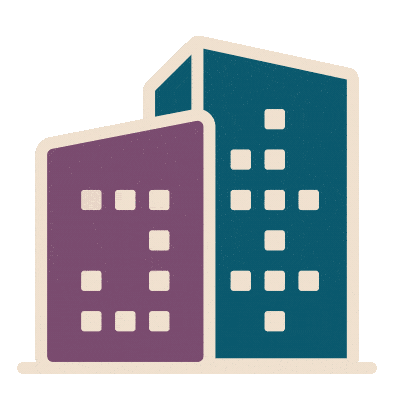Yure Suarez discovers a strong network in the WELL AP community
Discover how Yure Suarez uses WELL as a guiding tool to create healthy spaces.
Yure Suarez’s fascination with the influence that the built environment has on our lives led her to pursue the WELL AP credential. As sustainable building advisor at Perkins & Will, her knowledge of WELL helps her create spaces and buildings that are healthy for people and the planet alike.
1. What’s something about the WELL AP—or the WELL movement in general—that isn’t often discussed, but you think deserves more attention?
I consider that all topics related to equity and inclusion are not discussed enough. I know that some of them can be difficult, and some may have a limited scope based on each project. But, these are conversations I always encourage people to have. Wonderful things for the community and society at large can come from addressing these issues directly. Designers can be more than just order takers.
2. What’s something about the WELL AP program that you wish you’d known when you were first starting out?
Before becoming a WELL AP, I had no idea just how strong the support system that comes with the credential is. Other accreditations I have worked with do not have such robust and organized support for designers. Each project is indeed different, and sometimes a project’s characteristics don’t neatly fit the WELL Certification’s language and rules. In this case, it is extremely helpful to have a library available like the one WELL has online. But most especially, the quick responses that the IWBI team provides during project design is very helpful to make informed decisions.
3. What led you to pursue the WELL AP credential? What personal/professional significance does the WELL AP hold for you?
I have always been fascinated by the influence that the built environment has on our lives. In fact, my master’s research was based on understanding the role of building standards in real, societal change. I decided to get the WELL AP to acquire more tools and data points that will help me advise my clients and our designers on wellness, sustainability, inclusion and regeneration.
4. What does well-being mean to you? How do you incorporate well-being into your life and routine?
Well-being to me is a state in which my physical body, my spirit and my mind are balanced. To me, if one of the three is not being taken care of, I do not feel at peace or that I can perform my best. I do my best to consciously make decisions during the day that will protect that balance. But, when life happens and I feel unbalanced, it is important that the built environments where I spend my time offer me the space to reconnect and realign.
5. Is there a specific WELL concept, feature or set of features that have really resonated with you and that you’ve incorporated into your own life?
It is difficult to single any particular concept or feature out, because, to me, impact is what is most important. With every project, I aim to find the concept or feature that will make an environment better to work or live in. Very often, for offices with computer-based jobs, that answer is ergonomics.
6. From a health and well-being perspective, what are some of the most inspiring or exciting trends you’re seeing in the architecture industry?
To me, the materials-transparency and drawdown-carbon movements are the most impactful and exciting trends we are seeing right now. If we get more and more buildings designed under these frameworks, we will reduce our bodies’ burden due to exposure to heavy chemicals, and we will help combat the alarming progress of climate change.
7. Any tips for people studying for their WELL AP exam?
I am not really good at memorizing information, so when I have to study for tests like this, I try to look at the material with genuine curiosity. Then I will make some notes about those pieces that require memorization. I worked on memorization just the last couple of days before the exam, so it would stay fresh in my mind. I gave myself a month and a half, and I took my test online. It was very smooth.
8. Tell us about your experience working as a WELL AP during the COVID-19 pandemic. What are you most looking forward post-pandemic?
The pandemic has been absolutely devastating, on an incredible, global scale. As things begin to improve, I keep thinking of what is coming afterwards. I see the lines between home and office continuing to be blurred as more and more people have the flexibility to work from home. That will mean re-imagining both offices and homes.
Get started on your WELL AP journey by learning more about the program and what it has to offer.







